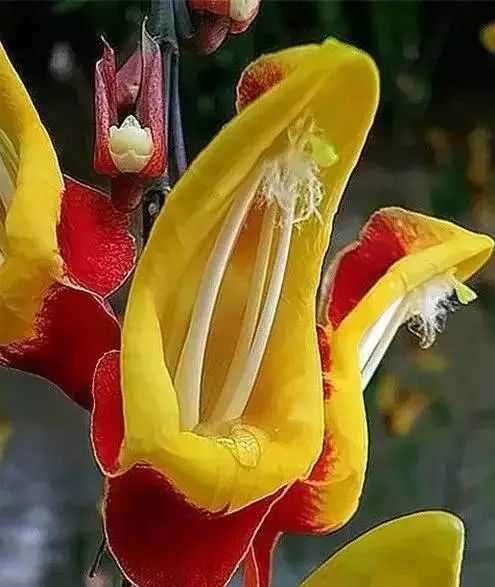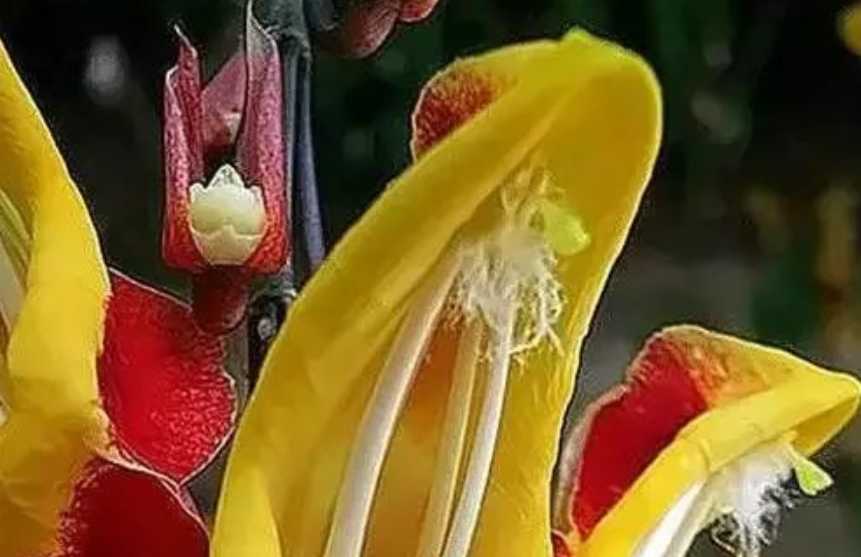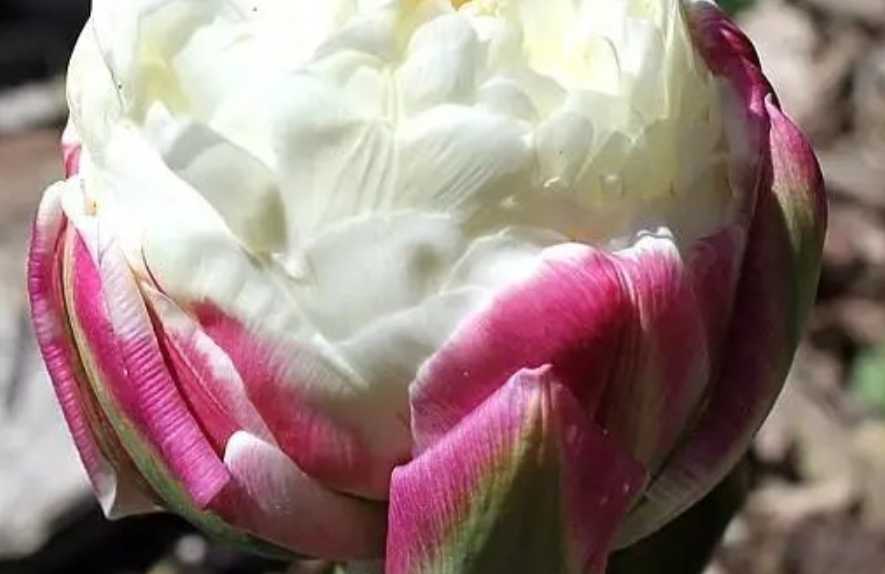Mesmerizing Clock Vine: A Botanical Wonder with Unique Appeal
The Clock Vine, scientifically named Thunbergia mysorensis, is a captivating plant that has enchanted gardeners and nature enthusiasts alike. Native to the southern forests of India, particularly around the city of Mysore in Karnataka state, this vine has found its way into gardens across the world for its stunning appearance and interesting growth habits.

Source: Images from the Internet, if there is any infringement, please contact the removal of
This evergreen vine can grow impressively long, reaching up to about 6 meters (20 feet) if left unpruned. One of its most remarkable features is the long, pendulous flower clusters that can be as long as 1 meter (3 feet). The flowers are a vivid combination of colors, with a bright yellow hue and reddish - maroon tips. The calyx, a deep reddish - maroon, adds to the flower's allure. As they bloom, the flowers hang down in a regular, almost clock - like pattern around the vine, which is how it got its charming common name. When in full bloom, the flower clusters sway gently in the wind, creating a spectacular and dynamic display.
Clock Vines are not only a treat for the eyes but also play an important role in the ecosystem. Their sweet nectar attracts a variety of pollinators, including butterflies and hummingbirds. These tiny visitors flit from flower to flower, helping with the crucial process of pollination. In gardens, they can be trained to grow over pergolas, trellises, arches, or verandas. When grown in such a way that the flowers can hang down through slats, they form beautiful, natural pendants of bright, colorful blooms.
In terms of cultivation, Clock Vines prefer warm, tropical climates. In the United States, they thrive in USDA hardiness zones 10 and 11, making them a popular choice for outdoor gardens in southern Florida and Hawaii. While they can tolerate some cooler temperatures for short periods, in colder regions, growing them indoors in a container is a viable option. They require average, well - drained soil and regular watering, as their prolific growth and blooming mean they need a consistent water supply. They also do well in spots that receive full sun to partial shade, and higher humidity is ideal. If growing indoors, using a humidity tray or regularly misting the plant can help create a more suitable environment. Propagation of the Clock Vine can be achieved through either seeds or stem cuttings. Taking 4 - inch (10 - cm) long stem cuttings in spring or early summer, applying a rooting hormone, and placing them in soil mixed with compost can lead to successful new plants.
-------- END --------






